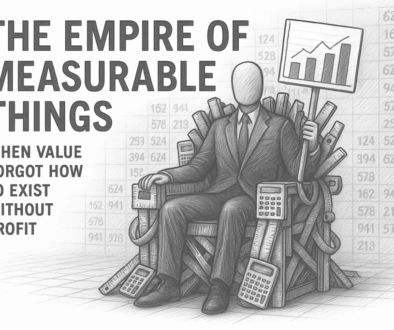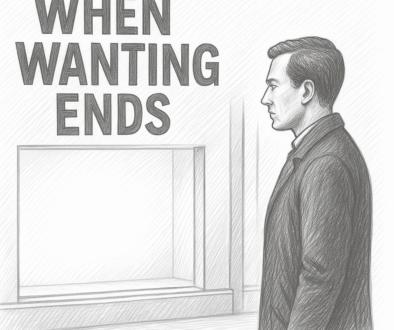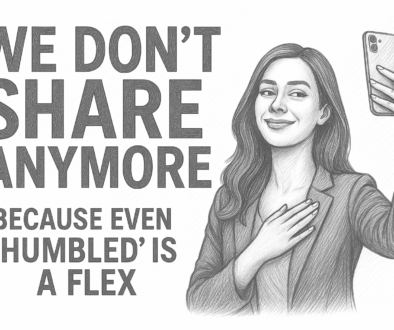nside the market where faith is worth more than steel.
Hey contrarians—
A counterfeit should be a semantic car crash.
If the object is fake, its value—as a semiofor, a carrier of meaning—should evaporate on contact, right?
Yet the global trade in counterfeits is worth hundreds of billions.The market of falseness isn’t a glitch; it’s an industry. Which raises a ruder question:
if the copy thrives, where exactly does the value of the original live?
This isn’t a legal essay about IP. It’s an autopsy on aura, status, and the stories we’re willing to believe when the copy is perfect.
Before the idea of “authenticity” became a marketing asset, value was something you could touch. Craftsmen once signed their work out of pride, not protection; a signature meant responsibility, not a trademark. With industrialization, that pride turned into protocol—certificates, patents, seals.
The market learned to worship documentation over craftsmanship, until the document itself became the product. Then came the philosophers of reproduction: Walter Benjamin mourning the death of the artwork’s aura; Baudrillard noting that copies now invent their own reality. Today, the theory scrolls under your thumb: dupe culture has turned the simulacrum into a subscription plan.
Reflection prompt: If a logo can move value from leather to ledger, was the leather ever the point?
Why the fake market blooms
A counterfeit handbag isn’t always deception; it’s participation.
In a status economy, signals are access keys. If the signal is visually identical, many users consider it “true enough” for the only arena that matters—the feed.
Luxury brands, meanwhile, spend fortunes on scarcity theatre—limited runs, waiting lists, and the destruction of unsold stock—to inflate social distance.
Counterfeits parasitize that performance.
And when the zipper zips and the watch tells time just as well, the difference between price and value collapses into a story.
If the experience is identical for 99% of observers, what fraction of value is pure myth management?

The Price of Belief
Every collector knows it but won’t admit it: the difference between a €15,000 Rolex and a €1,000 clone is mostly narrative.
Same steel. Same precision. Same glow under the night light.
So why do people still line up for the “real” one? Because what they’re buying isn’t timekeeping—it’s permission. Permission to belong to a tribe that can afford inefficiency. Permission to signal that scarcity still has meaning in an age where duplication is effortless.
Luxury today is not craftsmanship; it’s theater. The aura of exclusivity must be fed constantly—through waiting lists, celebrity wrists, and ritual destruction of excess. Meanwhile, replicas and second-hand markets operate like efficient parasites: same symbols, cleaner margins, fewer illusions. Every fake that circulates confirms the mythology of the original while eroding its material one.
Authenticity survives not despite the fake, but because of it.
If the only difference between two watches is belief, then what exactly are we measuring?
Originals vs copies when the copy is perfect
When the replica is indistinguishable, two forces keep the original valuable: technology and trust.
Certificates, serials, RFID, and now blockchain ledgersconvert belief into a system property—you don’t just buy the object; you buy its proof. Then come the gatekeepers: museums, auction houses, luxury maisons.
Their endorsement mints value by decree. The market confuses authority with truth because it needs to.
That’s why a flawless studio-made “Picasso” is worthless while a damaged authentic sketch is priceless. The line is not in the brushstroke; it’s in the witnesses. The original is a social agreement.
Some fakes kill, others amplify.
Counterfeit meds or aircraft parts destroy trust entirely; their copies are lethal. But luxury fashion, sneakers, and art thrive on imitation. Counterfeits can even inflate the myth: the more visible the logo, the larger the brand’s cultural footprint—whether through prestige or parody. Many brands know this and fight selectively, attacking fakes that endanger, ignoring those that advertise.
If counterfeits enlarge the cultural halo, is strict enforcement always aligned with a brand’s long-term interest—or just with quarterly optics?

The dupe feed and the semiotics of flex
On Instagram and TikTok, the image outlives the object. If 99% of the audience can’t authenticate on sight, the dupe performs the same social function: I belong.
The unit of value becomes the impression, not the item. Fake markets flourish in cities with high symbolic density—Milan, Paris, Guangzhou—because they act as conversion layers between aspiration and display. They don’t destroy value; they launder it into visibility.
If your brand equity lives on-camera, is the fake your enemy—or your unpaid media buy?
Counterfeits sit at the intersection of class and law. For some, a fake is theft; for others, it’s access. We criminalize the buyer at a street stall while rewarding conglomerates for “inspired by” designs that mirror independent creators. Which imitation counts as culture—and which as crime—often depends on who can afford lawyers.
So—where does the value of the original live?
Not in the stitch, not entirely in the story, and not only in the logo. It lives in a triangle: provenance (traceability), permission (institutional blessing), and participation (community belief). Break one vertex and the price wobbles; break two and the market collapses. The original is not a thing—it’s a contract, and the fake exploits the parts of that contract we outsourced to spectacle.
If authenticity is a social agreement, what parts of that agreement are you still willing to honor?
Field notes for builders (and skeptics)
Design for traceability before virality. Price for ritual, not just materials—people pay for belonging with a calendar. Decide where you stand on dupes-as-distribution: fight what risks safety; ignore what feeds the myth. Replace scarcity theatre with earned scarcity—limited by craft, not by marketing.
Remember: some value should refuse to scale. That’s not inefficiency; it’s integrity.
We think fakes destroy value. Often, they reveal it—by showing how much of our “real” is paperwork, choreography, and collective myth.
If that bothers you, good. It means you still believe in something the ledger can’t hold.
Until next time,
stay unmistakable.
Alex



